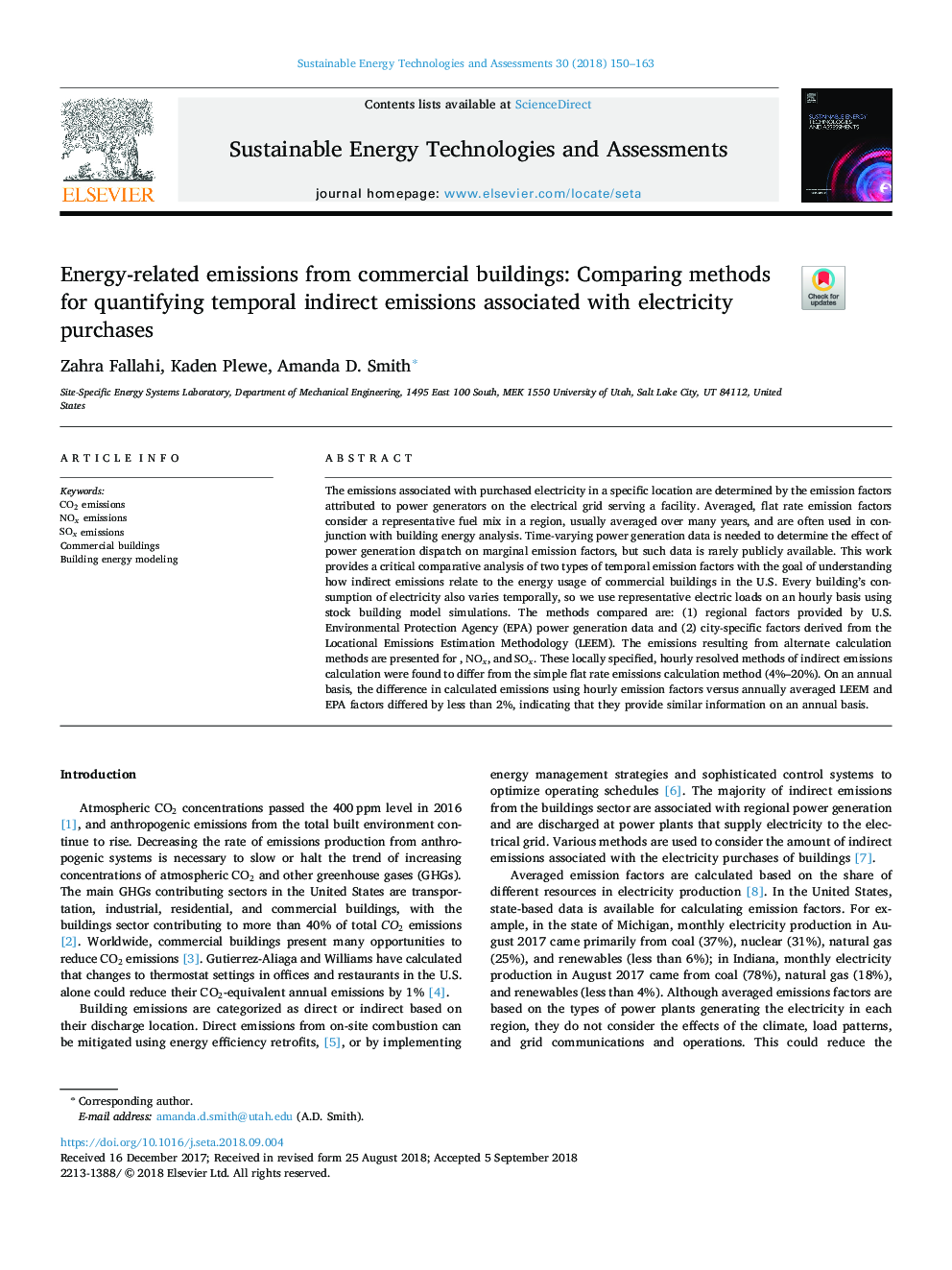| Article ID | Journal | Published Year | Pages | File Type |
|---|---|---|---|---|
| 11029486 | Sustainable Energy Technologies and Assessments | 2018 | 14 Pages |
Abstract
The emissions associated with purchased electricity in a specific location are determined by the emission factors attributed to power generators on the electrical grid serving a facility. Averaged, flat rate emission factors consider a representative fuel mix in a region, usually averaged over many years, and are often used in conjunction with building energy analysis. Time-varying power generation data is needed to determine the effect of power generation dispatch on marginal emission factors, but such data is rarely publicly available. This work provides a critical comparative analysis of two types of temporal emission factors with the goal of understanding how indirect emissions relate to the energy usage of commercial buildings in the U.S. Every building's consumption of electricity also varies temporally, so we use representative electric loads on an hourly basis using stock building model simulations. The methods compared are: (1) regional factors provided by U.S. Environmental Protection Agency (EPA) power generation data and (2) city-specific factors derived from the Locational Emissions Estimation Methodology (LEEM). The emissions resulting from alternate calculation methods are presented for CO2, NOx, and SOx. These locally specified, hourly resolved methods of indirect emissions calculation were found to differ from the simple flat rate emissions calculation method (4%-20%). On an annual basis, the difference in calculated emissions using hourly emission factors versus annually averaged LEEM and EPA factors differed by less than 2%, indicating that they provide similar information on an annual basis.
Related Topics
Physical Sciences and Engineering
Energy
Energy Engineering and Power Technology
Authors
Zahra Fallahi, Kaden Plewe, Amanda D. Smith,
